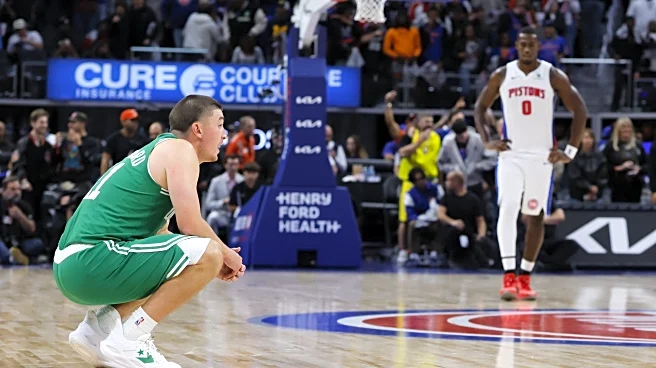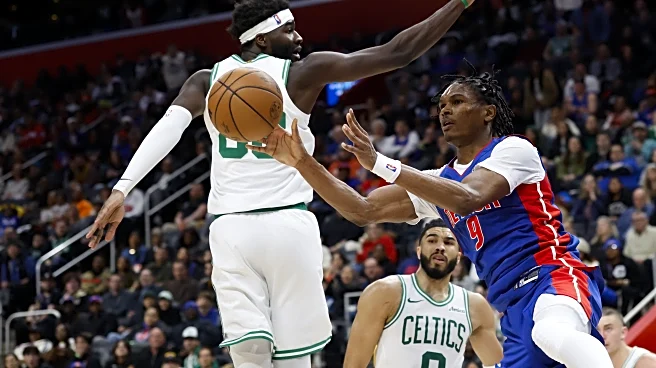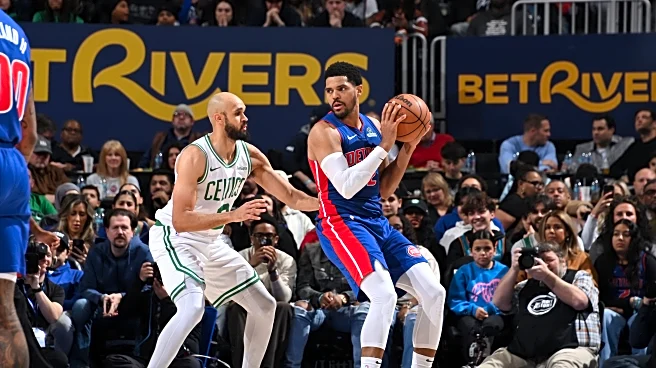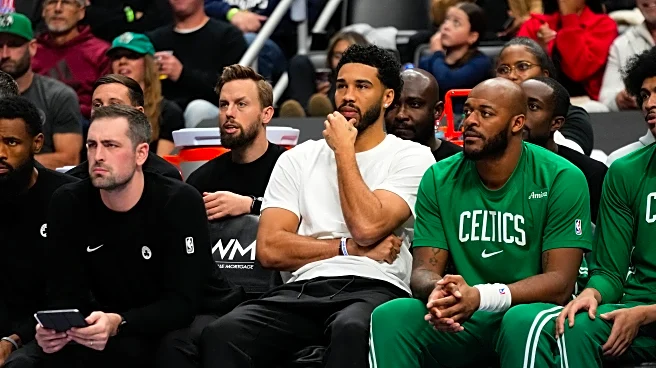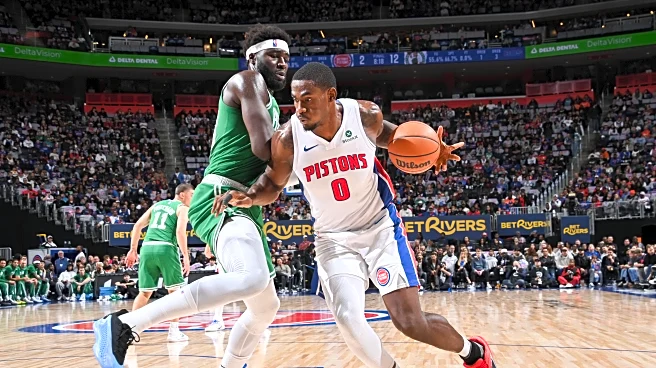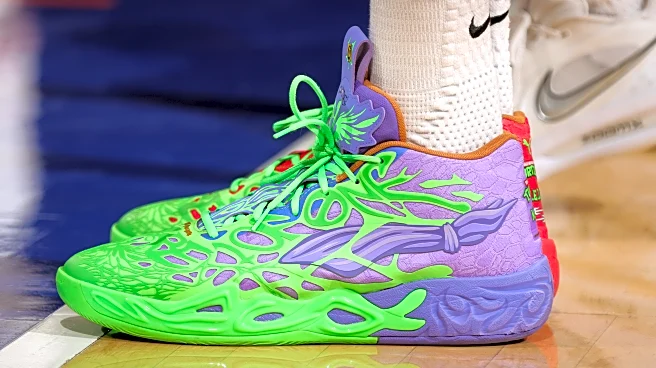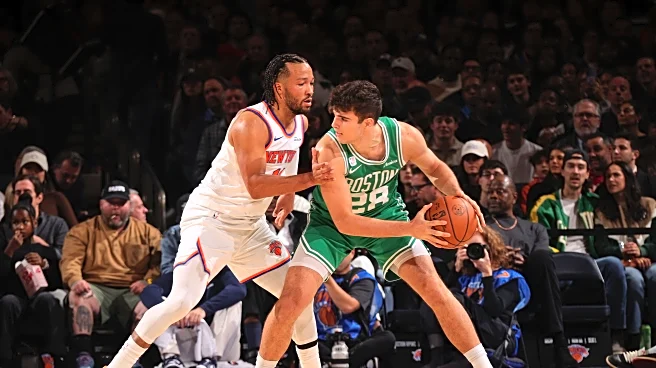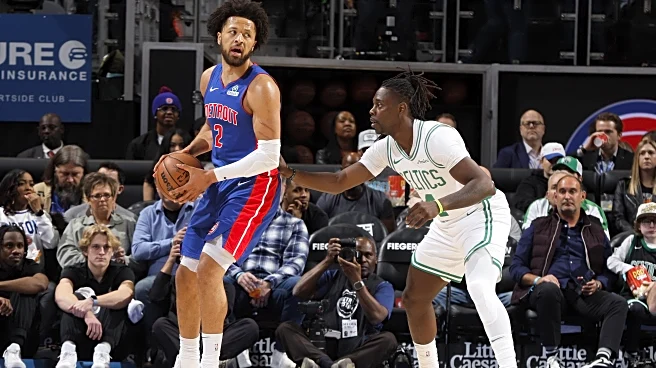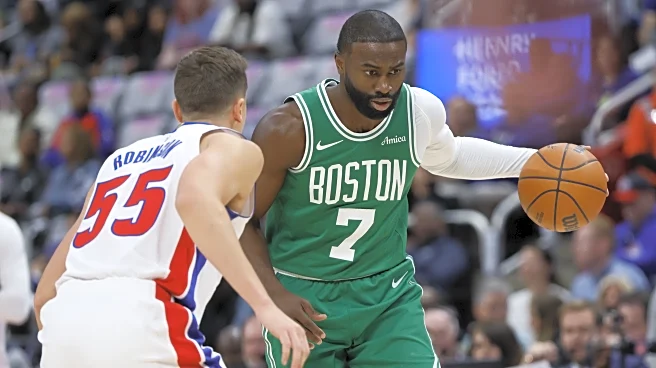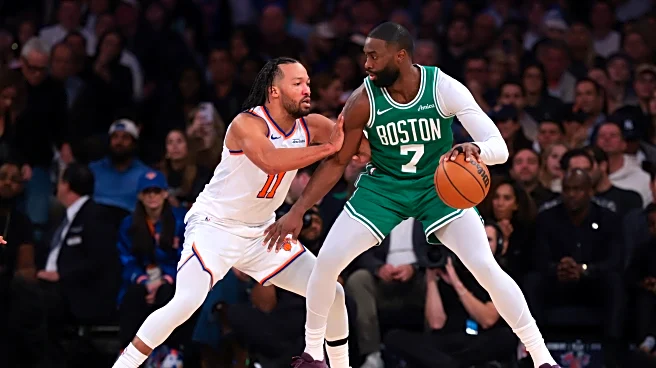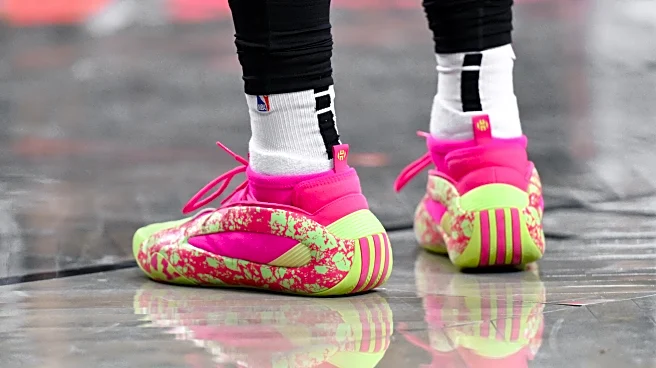#1 – Jaylen Brown scoring performance
41 points on 65% True Shooting, 12 made shots, 12 made free throws — Jaylen Brown looked like himself offensively last night. As we’ve seen before, he didn’t hesitate to go after mismatches like Duncan
Robinson in the first quarter.
As we’ll look into in #4, the Celtics also drew a lot of flare actions during the game, which gave Brown more space when he received the ball to attack the defense. Because he’s already a step ahead when he gets the ball, the floor is more open, and it’s easier for him to make a decision that will generate a good look.
His pick-and-roll game with Neemias Queta is starting to flourish, as the play below shows. The spacing is great for once, and the screen gives Brown time to gain speed and make his way to the rim.
His speed and burst seem to be back, as he was able to generate 15 free throws and left defenders in the dust — like here with Isaiah Stewart.
Nonetheless, there was still a problem late in the game when the Pistons decided to protect the rim at all costs, whether or not it left an open shot beyond the line. Because of that, JB’s efficiency went down in the fourth quarter — one made shot on six attempts and only seven points scored when it mattered most.
Overall, it showed that Jaylen Brown seems to have found his rhythm again, but without spacing — and without Jayson Tatum — late-game situations might get complicated for the All-Star.
#2 – Celtics new defensive identity
All summer long, we talked about the Boston Celtics’ new defensive identity. The main shift from last season is about defensive playmaking. For the last few years, the Celtics have been an elite defense thanks to rim protection and forcing teams into shots they didn’t want.
However, after last summer, Joe Mazzulla was forced to change his defensive approach. The new direction was obvious yesterday as soon as the game started. In the first quarter alone, the Celtics stole five balls and blocked four shots.
This defensive playmaking ability is the best way to generate transition — and that’s what the Celtics need.
#3 – The ball movement is still lacking
Once again this year, the assist rate was below last season’s average — far below. On this roster, the Celtics have a lot of isolation scorers who can, more or less, create their own offense and “get buckets.”
Jaylen Brown had a very impressive isolation game, and his box score numbers are strong. Nonetheless, this type of offense doesn’t create collective synergy. Plus, isolation scoring isn’t the most efficient way to score.
So, it’s great that the Celtics have players like Payton Pritchard and Anfernee Simons who can score in one-on-one situations, but the ball needs to move more and spaces need to be created for a better overall offense.
One way to do that is to keep developing these flare actions below…
#4 – Flare offense
The Celtics were already using these screens last season, but we might see a lot more in the next few months. Flare screens are set off-ball, on the opposite side of the ball handler, for the player who receives the screen. In the screenshot below, Queta sets a screen first on the left of Brown while the ball is on his right, in Pritchard’s hands.

This approach works well for the Celtics’ shooters or ball handlers because the defenders are often focused primarily on the ball. Therefore, when the screen is set off-ball and then the pass comes, the defender is already late.
In the play below, Brown first sets a screen on the ball, then runs to use Queta’s flare screen. Because of the chaining of screens, Jalen Duren is late and leaves Cade Cunningham alone to deal with Brown, who has a pocket of space to trigger from three.
In this second example, Jaylen Brown starts lower and uses Queta as a screener twice. The second screen is a flare, and you can see again the gap it creates in the defense. It forces Ausar Thompson to come help on JB’s drive, which leaves Pritchard open for a triple.
These moves put the defense under a lot of pressure because the Celtics’ ball handlers receive the ball with a step ahead in these situations. Great offense can come from this, but there’s still something else to fix if the Celtics want to compete for a Play-In spot.
#5 – Another possession battle lost
This isn’t something pleasant to repeat all season long — and it might change — but so far the Celtics are losing the possession battle, and that’s the reason behind the last two defeats. Looking at scoring efficiency, the Celtics were once again ahead. But because Detroit took more shots, they won the game.
But there might be another reason behind the loss.
#6 – They got to the line
On top of generating more possessions, the Pistons were able to force more trips to the free-throw line. Even if free throws are boring, they remain the most efficient way to get points on the board. Led by Jalen Duren with 12 free throws made, the Pistons scored 32 points at the line — 14 more than the Celtics.
While it’s fair to say the referees might share some responsibility — which might have led to Derrick White’s second tech of his career — I think there’s an underlying problem here.
The underlying reason, to me, is the inability to get to the rim.
#7 – No rim pressure
Against the Pistons, the Celtics took only 11 shots within four feet of the rim, compared to 27 for the Pistons. The difference in rim pressure can also be seen in the volume of corner threes. Often, paint touches and drives create defensive help that opens up the corners.
Last night, the Celtics only attempted five shots from the corners, while the Pistons generated 12. Boston is relying too much on pull-up jump shots from above the break or long mid-range attempts that are inefficient and won’t be enough to compensate for the lack of rebounding and free throws.
It’s still unclear which direction the Celtics will take — or can take. I doubt the current shot distribution pleases the coaching staff, but what can they change to make it more impactful?
#8 – Minott, why not?
One change that could have a positive impact on the Celtics’ overall performance is to give more minutes to Josh Minott. Of course, this won’t positively impact the spacing or shooting level of the team, as he’s often left alone beyond the line.
However, he knows how to play behind the defense — cutting at the rim while the defense focuses on the ball and the scoring gravity of his teammates.
His impact, like Hugo’s, will be crucial on defense. In only 15 minutes, he forced three turnovers and generated transitions that helped the Celtics come back in the fourth. In the sequence below, he made a shot from three and immediately started defending on the ball handler. With his length and great mobility, he was able to force a turnover and finish the transition with a beautiful and-one.
The Celtics’ spacing will never be perfect, so the coaching staff might as well start playing guys who can’t shoot but can help on defense and in the possession battle.
#9 – Celtics are the seals now
Another reason the Celtics might need more minutes from Minott or Hugo Gonzalez is that they’ve become the seals they used to hunt. With Sam Hauser, Pritchard, or Anfernee Simons, the Celtics always have players Cade Cunningham can target one-on-one in isolation.
Of course, Cade is one of the few players who can target anyone. He even went after Derrick White thanks to his size advantage. But without Jayson Tatum, Jrue Holiday, or Al Horford, these tall ball handlers are going to be a lot harder to deal with.
#10 – 0-3
First time since 2013 that the Celtics start 0-3… That’s also the last time Boston missed the Playoffs — Jaylen Brown wasn’t even in the league yet. The 2013 season was followed by the Marcus Smart draft and, a little later, the Isaiah Thomas trade.
Before winning again, the Celtics are going to have to live with leaning and losing.
